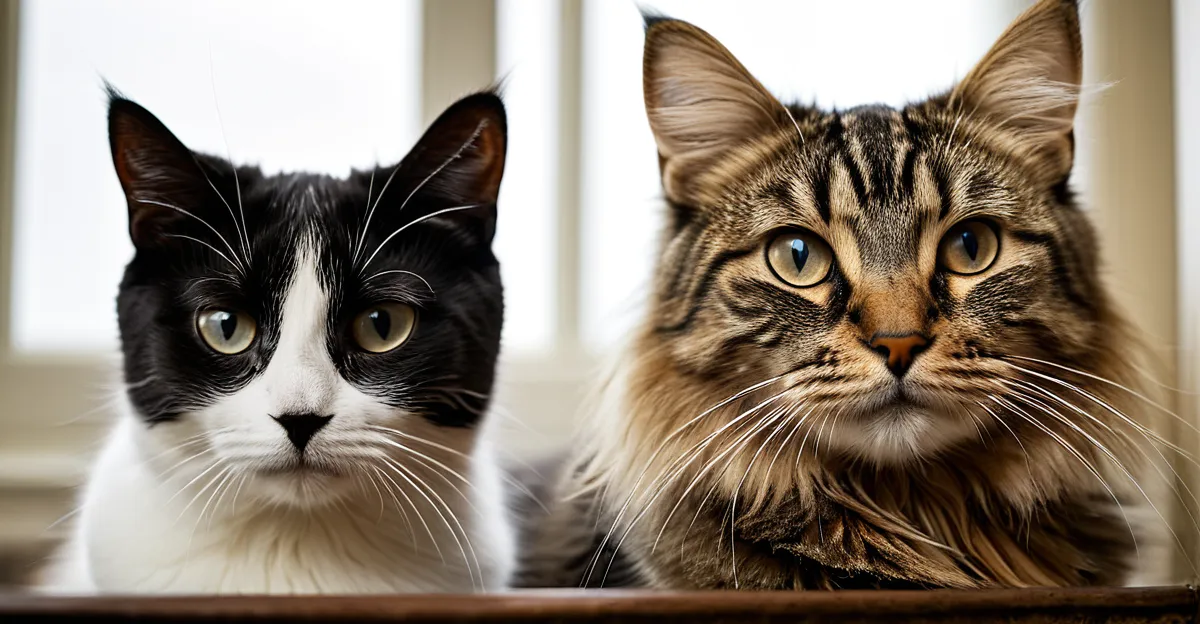Cultural Preferences for Pets
In British society, cultural attitudes towards pets reveal a fascinating dichotomy. Historically, cats hold a revered position, often linked to iconic British folklore and imagery. The cat’s aura of mystery and independence resonates with cultural narratives, featuring prominently in literature like “The Cat That Walked by Himself” by Rudyard Kipling. On the other hand, British pet ownership trends show an increasing enthusiasm for both cats and dogs, albeit with differing cultural connotations attached to each.
Dogs, often seen as loyal companions and symbols of protection, typically require more attention and engagement. This fosters a view of dog ownership as more demanding yet rewarding, embodying a stereotype of a bustling household. In contrast, the attitudes towards cat ownership often paint them as ideal companions for those seeking tranquility and minimal maintenance. This aligns with societal rhythms in increasingly urban environments, where limited space and time dictate pet choices.
Have you seen this : Why Are Dogs in the UK Considered Man’s Best Friend?
Additionally, the media heavily influences these preferences. Popular television shows and movies often portray dogs in active, heroic roles, reinforcing their status as family-centric pets. Conversely, cats are frequently depicted in roles emphasizing their enigmatic charm, aligning with cultural attitudes towards pets that appreciate self-sufficient yet affectionate creatures.
Lifestyle Considerations
When it comes to choosing between cats and dogs, lifestyle factors play a pivotal role in guiding decisions. In urban living conditions, where limited space is a common challenge, cats offer a practical solution. Their independent nature suits apartments and small homes well, appealing to individuals with busy lifestyles who prefer a pet that requires low-maintenance care.
Additional reading : How Can Owning a Pet in the UK Transform Your Life?
Conversely, dog ownership in such environments can be more demanding due to space constraints and the need for regular exercise. Dogs often thrive better in rural settings, where open spaces allow them to explore and expend energy. This lifestyle factor emphasizes the time commitment differential between owning a cat versus a dog.
Furthermore, the hectic pace of urban life can influence pet selection. Cats, requiring less constant attention, fit seamlessly into the routines of people with packed schedules. They offer companionship without the pressure of numerous walks or activities, aligning with the needs of those in bustling city environments. Ultimately, the choice between pets often hinges on how well they fit into the owner’s lifestyle and living situation.
Economic Factors
Understanding the costs of pet ownership is crucial for potential pet owners, as these expenses can significantly influence decisions. Generally, dog ownership tends to be more expensive compared to owning a cat. Economic benefits of choosing cats come from their lower maintenance and associated costs.
Expense Comparisons
-
Initial Costs: Acquisition fees for puppies can be higher, especially for specific breeds. Cats often have lower adoption fees.
-
Ongoing Expenses: Dogs require more food, toys, and accessories. Grooming for certain dog breeds is also more frequent and costly.
-
Healthcare Costs: Veterinary bills and insurance for dogs are typically higher due to their size and potential health issues.
Choosing cats can be more financially feasible for households, particularly in urban areas where budgets might be constrained. The financial considerations influencing pet ownership decisions often revolve around these varied expenses, with many families opting for cats due to their budget-friendly nature.
Health and Well-being Aspects
Pets can play a key role in enhancing the overall mental health and well-being of families. Many studies highlight the benefits that petting cats can provide, particularly in reducing stress and anxiety levels. Cats often offer a calming presence, making them an excellent choice for individuals or families seeking emotional comfort and tranquillity at home.
Space and Health Dynamics
Cats adapt well to various household sizes, requiring less physical space compared to dogs. This makes them ideal for smaller homes or apartments, where the layout may not support the needs of larger, more active pets. On the other hand, dogs typically require more room to roam and play, aligning them with households offering substantial outdoor areas.
The health advantages of owning cats extend beyond mere convenience. They are known for maintaining a quieter environment, which can positively affect cardiovascular health by minimizing noise-induced stress. This characteristic aligns with the needs of many households aiming to strike a balance between companionship and a peaceful living atmosphere.
Overall, choosing a pet that meshes well with both the physical layout and emotional requirements of a home is vital. By understanding these health and spatial dynamics, prospective pet owners can make informed decisions that foster healthier living arrangements.
Statistical Insights and Surveys
Exploring the landscape of pet ownership statistics provides revealing insights into current trends in the UK. Recent surveys highlight that approximately 26% of households in the UK own cats, while 29% have dogs. This data underscores a closely matched preference for both pets, despite the diverse lifestyle demands they impose. Such figures suggest a delicate balance in cultural and practical considerations influencing pet choices.
In examining differences between cat and dog ownership, surveys reveal that cat owners often cite convenience and lower costs as pivotal factors for their choice. Conversely, dog owners value companionship and the active lifestyle dogs encourage. This distinction underscores how pet ownership aligns with personal values and living conditions.
Analyzing trends in cat versus dog ownership over recent years indicates a gradual increase in urban cat ownership, correlating with urbanisation and changing living conditions. This shift aligns with the growing popularity of independent and low-maintenance pets, further reflecting cultural attitudes towards pets that prioritize adaptability to fast-paced lifestyles. These statistics offer a valuable snapshot of how societal trends impact pet ownership patterns, highlighting a dynamic interplay between cultural values, economic conditions, and lifestyle needs.
Expert Opinions and Anecdotal Evidence
Delving into the expert insights on pets, veterinarians and pet behaviorists often highlight the intrinsic benefits of cat ownership, especially given their flexible nature and self-sufficiency. Experts argue that cats can seamlessly integrate into various living environments, offering emotional support without significant demand for daily exercise, unlike their canine counterparts.
In addition to professional perspectives, anecdotal pet ownership experiences paint a vivid picture of the joys and challenges associated with cats versus dogs. Cat owners frequently share stories of finding solace in their pet’s calm presence, particularly valuable during stressful periods. Meanwhile, dog owners may recount tales of energetic walks and unwavering loyalty, emphasizing an active companionship that requires more engagement.
Public forums and community discussions further illuminate these preferences, with pet enthusiasts often debating the merits of each animal type. These platforms serve as valuable resources for prospective pet owners, providing firsthand accounts and advice that can shape informed decisions. Together, expert opinions and personal anecdotes construct a comprehensive narrative around the cultural and emotional dimensions of pet choice.

